What would Thanksgiving be without herbs and spices? Imagine turkey and stuffing minus the fragrance of sage, thyme, rosemary and marjoram. Pumpkin pie wouldn't taste as rich without cinnamon, nutmeg, ginger, cloves and allspice. Among the many blessings of today's cooks and bakers is the ease with which we obtain and use these delicious seasonings.
American colonists who braved the hazardous journey to the New World brought with them seeds or carefully tended cuttings of the familiar herbs they had grown in Europe. At the same time, sailors scoured the globe, staking fortunes and lives in their search for exotic spices. Today we needn’t undertake a perilous sea voyage to enjoy these aromatic treasures at our Thanksgiving feast. A quick trip to the store or an even more effortless online shopping expedition put the world’s flavors at our fingertips.
Herbs
Harvested from the leaves or flowers of herbaceous plants, herbs originated in temperate areas of Europe and the countries bordering the Mediterranean. In addition to their use as food flavoring, herbs were most likely humankind’s first source of medicine. Given the right conditions, most of these plants can be grown by any home gardener, and are easily preserved for use out of season. Herbs such as sage, thyme, rosemary and marjoram can be used either fresh or dried in a recipe. A tablespoon of finely-cut fresh herb is roughly equivalent to 1/4 to 1/2 teaspoon of ground dry herb.
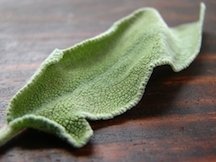 Sage
Sage
Sage leaves are fuzzy, lance-shaped and a silvery green in color. This herb’s long reputation as a healing plant is easily discerned in its scientific name -- Salvia officiinalis, from the Latin “salvere,” meaning “to be saved.” If there is any one herb most associated with poultry or poultry stuffing, it is this peppery-tasting native of the Mediterranean.
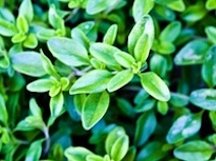 Thyme
Thyme
Thyme, or Thymus vulgaris, is also native to the Mediterranean. This delicate-looking herb features very small, narrow grayish-green leaves. As a medicine, thyme has a long history of use as a medicinal ingredient for treating chest and respiratory illnesses. Thymol, the primary volatile oil present in the plant, is responsible for the herb’s pungent sharpness. 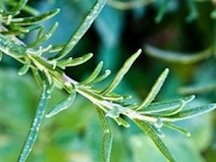 Rosemary
Rosemary
Rosemary, or Rosmarinus officinalis, is a woody plant indigenous to Asia and the Mediterranean. It adds an astringent, piney aroma to foods. The leaves, which resemble the needles of an evergreen, are deep green on the top and silvery on the bottom. Since ancient times, rosemary was believed to strengthen one’s memory. Its Latin name means “dew of the sea,” referring to its ability to survive on little water. 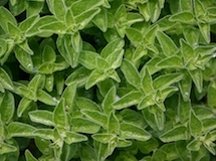 Marjoram
Marjoram
Marjoram, or Origanum majorana, is a tender perennial native to the Mediterannean and a relative of the more strong-flavored oregano. Mild and sweet to the taste, this herb has a slightly floral aroma. To the ancients, marjoram was a symbol of happiness.
Spices
Until relatively recently, spices were exotic and difficult to obtain, making them extraordinarily expensive. The quest for a direct route to the spice-producing lands of the East was one of the primary goals of the 1492 sea voyage of Christopher Columbus. All spices are derived from the root, fruit, flower, seed or bark of either a woody or a herbaceous plant, and grow in warm, tropical climates. Spices are more concentrated than herbs, so you need only a small amount to flavor food. Although each is harvested from a different part of a plant, cinnamon, nutmeg, ginger, cloves and allspice are all considered spices.
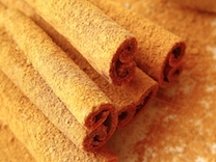 Cinnamon
Cinnamon
Many people know this sweet, warm spice in its ground form only, but it’s actually made from the bark of the cinnamon tree. As it dries, the bark rolls into a tube shape called a quill. The two most important culinary varieties are Cinnamomum zeylanicum (Ceylon cinnamon) and Cinnamomum aromaticum (Chinese cinnamon). The Chinese variety, also known as cassia, is the cinnamon flavoring most familiar to American palates.
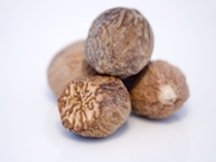 Nutmeg
Nutmeg
The sweet and peppery flavor of nutmeg comes from the ripened and dried seed of the Myristica fragrans tree, native to the Moluccas, or Spice Islands. The husks of the nuts are removed and processed separately to make a similar-tasting spice called mace. Nutmeg quickly loses its intensity once ground. It’s easy to grate your own fresh spice as needed by purchasing whole nutmeg nuts and a small hand grater.
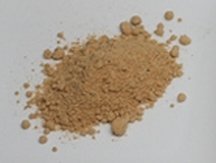
Ginger
Pungent ginger, or Zingiber officinale, is harvested from the pale, knotty rhizome of a plant native to India and China. Modern scientific research has confirmed the long-held belief in ginger’s ability to soothe gastrointestinal distress. Ginger is available in a variety of forms, but bakers most often use powdered ginger, which imparts a pleasant sharpness and heat to baked goods.
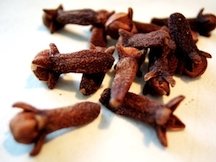 Cloves
Cloves
Cloves, or Eugenia caryophyllus, are unopened flower buds from the evergreen clove tree. They resemble tiny nails, and in fact their name derives from the Latin “clavus,” meaning nail. Inside their hard exterior is an oily compound responsible for the clove’s intensely warm and aromatic flavor. You can grind whole cloves into powdered form by using a coffee or spice mill. Cloves, like nutmegs, are also native to the Spice Islands.
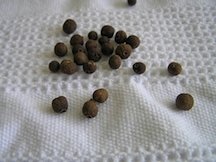 Allspice
Allspice
Contrary to its somewhat ambiguous name, this dried, unripe berry of the tropical evergreen tree called Pimenta dioica is a distinct spice. The European explorers who first discovered it in Central America thought the berries tasted like a combination of cinnamon, nutmeg and cloves, and thus called it allspice. The berries are similar in size and shape to peppercorns, and you can use a pepper mill to grate your own fresh spice. Allspice is the only spice grown exclusively in the Western hemisphere.
All-In-One Mixes
Casual cooks may find it convenient and economical to purchase all-in-one seasonings for flavoring Thanksgiving dishes. Such mixes spare you the time and trouble of measuring out separate amounts of multiple herbs or spices. Most serious cooks, however, prefer the versatility and creativity engendered by a well-stocked spice rack.
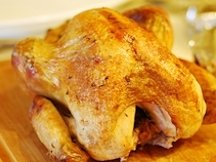 Poultry Seasoning
Poultry Seasoning
Poultry seasoning mixes allow you to spice up chicken, turkey or stuffing with a few shakes of a single spice container. Such mixes consist primarily of thyme and sage, and may also include savory, marjoram, rosemary, black pepper, nutmeg or celery salt. Many New England cooks would not be without Bell’s Seasoning, one of the oldest American poultry spice mixes. This renowned Massachusetts family recipe contains rosemary, oregano, sage, ginger, marjoram, thyme and pepper.
 Pumpkin Pie Spice
Pumpkin Pie Spice
Recipes for pumpkin pie may vary in the quantity or proportions of spices, but most list some combination of cinnamon, ginger, nutmeg, allspice and/or cloves. If your recipe calls for pumpkin pie spice but you’d rather use separate ingredients, you can make your own mix. Substitute 1/2 tsp. of ground cinnamon, 1/4 tsp. of ground ginger, 1/8 tsp. of ground nutmeg and 1/8 tsp. of ground allspice or ground cloves for each 1 tsp. of pumpkin pie spice.
Images:
Cinnamon and cloves by nsdis
Sage leaf by onenjen
Thyme and Rosemary by Jill Clardy
Marjoram by Rhonda Fleming Hayes
Cinnamon by ion-bogdan dumitrescu
Nutmeg by Nikita Avvakumov
Ginger by michelle@TNS
Cloves by zoyachubby
Allspice by Ryan Snyder
Turkey by Lucas Richarz
Pumpkin pie by Ann Larie Valentine
(Editor's Note: This article was originally published on November 23, 2011. Your comments are welcome, but please be aware that authors of previously published articles may not be able to promptly respond to new questions or comments.)






 Sage
Sage Thyme
Thyme Rosemary
Rosemary Marjoram
Marjoram Cinnamon
Cinnamon Nutmeg
Nutmeg
 Cloves
Cloves Allspice
Allspice Poultry Seasoning
Poultry Seasoning Pumpkin Pie Spice
Pumpkin Pie Spice